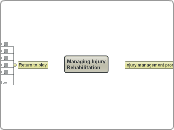Managing Injury Rehabilitation
Injury management procedures
Progressive mobilisation
Graduated exercise
Stretching
Conditioning
Total body fitness
Training
Use of heat and cold
Return to play
Indicators of readiness
Monitoring progress
Psychological readiness
Specific warm-up procedures
Policies and procedures
Ethical considerations
Pressure to participate
Use of painkillers
